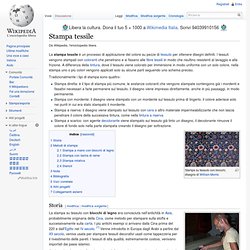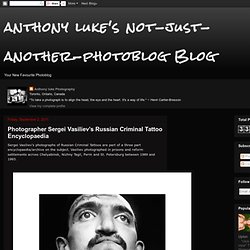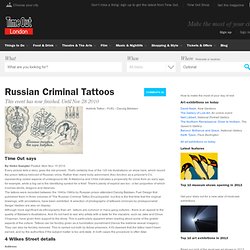

UK Fashion and Lifestyle Blog: Fashion, Art and Food! Last Friday I popped down to London for the day as Kristabel had some tickets for Kenzo:Fashion In Motion at the V&A and er...how could I say no?

Unfortunately I have zero photos of myself...apart from my purple clad legs from when I was waiting for my bus. I can assure you that the top half of my outfit was also purple and grey. Definitely a favourite colour combo of mine! More waiting for the train... I read this Metro article on the train and it reminded me of when my grandma asked an evaluator to her house to look at some things that my granddad had collected over the years. When I arrived, I met Kristabel at the Japan Centre where we ate delicious and cheap sushi. The show was held in the Raphael gallery in the V&A and as an Art History grad I did question the bright lights and the delicate art works but I soon forgot when the bold looks hit the runway. I adore the V&A and it's my favourite museum in London. Radical Fiber Art. Stampa tessile. Da Wikipedia, l'enciclopedia libera.

La stampa tessile è un processo di applicazione del colore su pezze di tessuto per ottenere disegni definiti. Russian folk costume inspiration. Inspirations Russian folk costume inspiration. by Kate Noir on Jul 29, 2012 •

D.A.P. Catalog FUEL Publishing 2010 9780956356246 Distribution Publisher Availability, Bibliographic Data. Photographer Sergei Vasiliev’s Russian Criminal Tattoo Encyclopaedia. Sergei Vasiliev‘s photographs of Russian Criminal Tattoos are part of a three part encyclopaedia/archive on the subject.

Vasiliev photographed in prisons and reform settlements across Chelyabinsk, Nizhny Tagil, Perm and St. Petersburg between 1989 and 1993. (David Cronenberg made regular use of the Encyclopaedia during the making of his 2007 movie Eastern Promises). Tattooing was illegal in prisons, so prisoners made tattoos by melting down boot heels and mixing the solution with blood and urine. The Soviet dissident and writer Eduard Kuznetsov writes about a con who was operated on by prison authorities three times against his will to remove a tattoo on his forehead. Forgive Us Our Trespasses: Russian Criminal Tattoos, As Photographed by Sergei Vasiliev. Bodies as Text Sergei Vasiliev Between 1948 to 2005, 3,000 drawings were compiled by prison warden and ethnographer Danzing Baldaev of the tattoos of the inmates.

Supported by the KGB, who recognised the usefulness of such a document, these drawings were supplemented by photographs by Sergei Vasiliev, a fellow warden. In 2003, the publisher Fuel began repackaging the sketches and photographs into the Russian Criminal Tattoo Encyclopaedia. Eleonora Merlo. Background.

Kolima – Laboratorio di tatuaggio siberiano. TATUAJE PRISION RUSA III (Tattoo/siberian) FUEL. FUEL › RUSSIAN CRIMINAL TATTOO ARCHIVE › DRAWINGS › DRAWING NO. 1. Criminal tattoo. Tattoos are commonly used among criminals to show gang membership[1] and record the wearer's personal history—such as his or her skills, specialties, accomplishments and convictions.

They are also used as a means of personal expression. Certain designs have developed recognized coded meanings.[2] The code systems can be quite complex and because of the nature of what they encode, the tattoo designs are not widely recognized. A member of the Mexican Mafia has the organization's name tattoed on his abdomen Tattooing in prison[edit] Tattooing is forbidden in most prisons. In Russian prisons, "...the pain does deter even the most macho convict from covering his body, all at once, with meaningful pictures. Asia[edit] Russia and former Soviet republics[edit] Russian Criminal Tattoos. Russian criminal tattoos are ornate and political charged works of art.

These marks, riven in flesh, de-mark criminal histories and tell a hidden countercultural story of Russian life over the past 100 years. This powerful artistic legacy would have disappeared from living memory was it not for the efforts of ethnographer, prison guard and visionary Danzig Baldaev. Having been branded the son of an enemy of the people, Baldev was send to an orphanage for children of political prisoners. Later he fought in the second World War, before becoming a prison warden at Kresty prison in St Petersburg. Baldaev spent 33 years of his life recording the tattoos etched on the bodies of prisoners throughout the Russian prison system. Russian Criminal Tattoos at 4 Wilkes Street - East. Every picture tells a story, goes the old proverb.

That's certainly true of the 120 ink illustrations on show here, which record the prison tattoos beloved of Russian crims. Rather than mere body adornment, they function as a prisoner's CV, representing coded aspects of underground life. The Project Gutenberg eBook of Overland through Asia; Pictures of Siberian, Chinese, and Tartar Life, by Thomas Wallace Knox. Siberian Hypertext) Pizza digitale. Skin Life - Galleria Gagliardi Art System di Torino - Gas / Gagliardi Art System gallery. Vai all'evento: SKIN LIFE Vai alla sede: Gas / Gagliardi Art System gallery Gli artisti correlati: Fabio Viale, Davide Coltro, Daniel Glaser + Magdalena Kunz.

Jason Barnum, le foto del criminale Terminator. Russian criminal tattoos: breaking the code. Russian Criminal Tattoos. Russian Criminal Tatoos. Like in other countries there is a mania for tattoos among criminals, but in Russia they give much more sense for those signs on their bodies. Each even smallest detail can be interpreted as a biography verse from the life of tattoo owner, both police and criminals can just look at the body of the tattooed person and tell all his deeds.
They say these days there more freedom is allowed in decorating their bodies such way, but during the Soviet regime a person could earn big disgrace from his friends if he made a tattoo not according the rules. Closer look: Russian Criminal Tattoos. We wanted to start your morning off a little heavy, but like a proper newspaper, with a bit of history and historical context.
Right now in London, England, an exhibition exploring the photography and mythology of Russian criminal tattoos is on display. Anyone who has studied Russian history, art, visual propaganda, or literature has found a very unique form of satire and humor that is both proud and self-depracating. Ruolo (sociologia) Da Wikipedia, l'enciclopedia libera. Il termine ruolo etimologicamente deriva dal francese rôle contrazione di rôtle e questo a sua volta dal latino ròtulus o rùtula diminutivo di ròta che vuol dire ruota, disco, giro. Il concetto di ruolo in sociologia definisce l'insieme dei modelli di comportamento attesi, degli obblighi e delle aspettative che convergono su un individuo che ricopre una determinata posizione sociale. Abbigliamento in “Universo del Corpo”